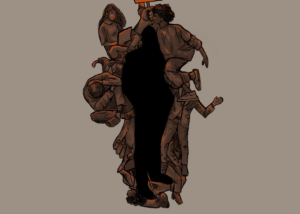The Anacostia, otherwise known as D.C.’s “Forgotten River,” stands as testimony to the environmental decay caused by decades of unsustainable fishing practices, industrial dumping, uncontrolled development, and outright negligence.
In a 2011 study conducted by the Anacostia Watershed Society, the waterway fell short of government standards not only when it came to the current level of contamination in the river, but also in its efforts to improve water quality. “Basically the message this year is that we hit bottom, and are starting to climb back out,” AWS’s Julie Lawson told Washington City Paper .
This pollution is the number one contributor to the dead zones that now encompass almost one-third of the Chesapeake Bay. Indeed, that the Anacostia is an environmental calamity. However, that this grievously neglected river flows through the youngest and poorest sectors of the city belies a greater human rights crisis. For decades, the watershed area has been polluted my more factories than any other ward in the District.
Ward 8, which contains much of the watershed area of the river, is one of the most economically depressed sections of the city. Unemployment stands at nearly 20 percent, according to the Census Bureau. Meanwhile, in 2010, children make up one-third of the ward’s residents, and almost 40 percent of them were growing up in poverty.
In such a climate, many resort to subsistence fishing to supplement their diets. Others fish recreationally, but still feed their families with their catch. Needless to say, ingesting fish spawned in the putrid Anacostia waters is extremely unhealthy, especially to pregnant women and children. Studies carried out by the Anacostia Riverkeeper in conjunction with the U.S. Fish and Wildlife Services show that fish in the Anacostia river are contaminated with toxins such as arsenic, DDT, lead, and grease. Barring ingestion of contaminated fish by Anacostia residents, the toxins still have a negative effect on the region; living adjacent to such filth has disastrous consequences on the region’s aging infrastructure.
Over the past few years, the District has begun to introduce new measures to restore the watershed area. The bag tax, for example, funnels money to the AWS, which has made progress in stabilizing dissolved oxygen levels in the water, normalizing chlorophyll levels, controlling runoff, and decreasing the flow of toxin leaks into the river. DC Water is also undergoing a massive infrastructure overhaul that will mitigate sewage flowing into the river from the area’s antiquated Combined Sewer Outflow system.
However, the catastrophe on the Anacostia demands even greater efforts. The D.C. government must increase funding toward remediation efforts and require green development along the river. Meanwhile, advocacy groups should keep the pressure on the city—through legal action, if necessary—to fulfill their duty to maintain a safe, clean environment, especially for the District’s poorest citizens.




Ward 8 needs a turn around similar to what is happening in Eckington, Bloomingdale & Shaw, as well as in the SW Waterfront district. Young people need to move in and Ward 8 is very affordable compared to the high rents in other parts of DC.
Plus the government needs to tackle crime and increase mass transportation in Ward 8 and vicinity. It is just 4 miles from the Smithsonian Museum to the Frederick Douglass Home….who would not want to live so close to the heart of DC?
Georgetown has been considering Anacostia for expanding its campus as the present one is running out of space. Imagine what that would do to the area. It would bring prosperity, jobs, safety and a large and vibrant young population who in turn will create more jobs. Is that not what is needed for Ward 8? It is time to turn Ward 8 around ! Time to revamp and improve the last remaining outpost of DC.